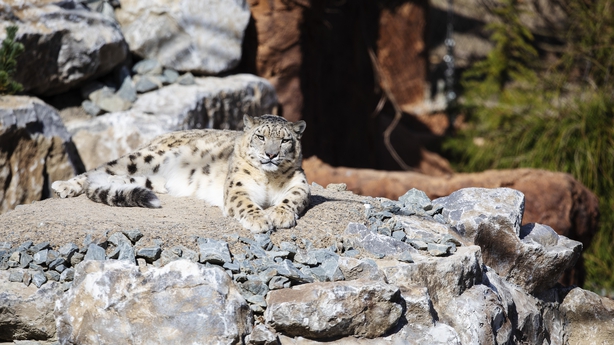Dublin Zoo has unveiled a new Himalayan habitat, which is to house red pandas and snow leopards.
The Zoo has said the new habitat area will reflect the look and feel of a Nepalese village, with colourful roofs and prayer flags.
The "Himalayan Hills" habitat was opened this morning by Tánaiste Leo Varadkar.
Red pandas are listed as Endangered on the International Union for Conservation of Nature (IUCN) Red List.
Native to high-altitude bamboo forests in the Himalayas, one of their main threats in the wild is habitat loss.
The snow leopard - known for its silver, white and black fur and green eyes - is listed as Vulnerable on the IUCN Red List. In the wild, they face threats of poaching and habitat loss.

The development of the new habitat was delayed by the pandemic, during which the zoo faced funding issues to remain operational. It said thanks to the overwhelming support of the public and the Government, it was able to finally eventually able to launch the new habitat today.
More than €3 million went towards the venture, around half of which was funded by Government through the Office of Public Works.
Dublin Zoo Director Dr Christoph Schwitzer said the habitat represents another milestone in the zoo's journey.
"We are very excited to open the brand new Himalayan Hills habitat to our visitors. It has been designed to enhance the lifestyle of both the snow leopard and red panda, taking inspiration from their natural environment in Nepal.
"These habitats representing another milestone on our journey of developing Dublin Zoo into one of the best in the world."
Dr Schwitzer said both snow leopards and red pandas are threatened in the wild.
The red panda population has fallen by 50% in the last 18 years due to illegal poaching, habitat loss and also because they are very vulnerable to canine distemper virus.
This is a disease they can catch through contact with domesticated dogs.
"We are financially supporting an organisation called the Red Panda Network in Nepal, who put up community based anti-poaching patrols to find snare and traps report them to the local authorities," Dr Schwitzer said.
The Zoo is also supporting the Snow Leopard Trust which works across 12 states where the snow leopard lives.
Dublin Zoo is working on conservation both internationally and nationally and is looking at taking in some native Irish species, possibly red-billed choughs or Irish hares.
"We want to bring Dubliners closer to their own wild life and as part of that we will be working to help conservation in Ireland," Dr Schwitzer said.
He said barn owls are one species the zoo is hoping to help as they are under threat, with road traffic a particular hazard.






